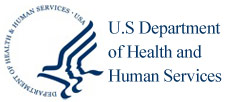- CMS: Request for Information; Health Technology Ecosystem
- VA: Staff Sergeant Fox Suicide Prevention Grant Program Funding Opportunity
- State: 60-Day Notice of Proposed Information Collection: J-1 Visa Waiver Recommendation Application
- Public Inspection: CMS: Request for Information: Health Technology Ecosystem
- HHS: Request for Information (RFI): Ensuring Lawful Regulation and Unleashing Innovation To Make American Healthy Again
- VA: Solicitation of Nominations for the Appointment to the Advisory Committee on Tribal and Indian Affairs
- GAO Seeks New Members for Tribal and Indigenous Advisory Council
- VA: Staff Sergeant Fox Suicide Prevention Grant Program Funding Opportunity
- Telehealth Study Recruiting Veterans Now
- USDA Delivers Immediate Relief to Farmers, Ranchers and Rural Communities Impacted by Recent Disasters
- Submit Nominations for Partnership for Quality Measurement (PQM) Committees
- Unleashing Prosperity Through Deregulation of the Medicare Program (Executive Order 14192) - Request for Information
- Dr. Mehmet Oz Shares Vision for CMS
- CMS Refocuses on its Core Mission and Preserving the State-Federal Medicaid Partnership
- Social Factors Help Explain Worse Cardiovascular Health among Adults in Rural Vs. Urban Communities
HHS Report Released on Telehealth Utilization amid COVID-19

The U.S. Department of Health and Human Services (HHS), through the Assistant Secretary for Planning and Evaluation (ASPE), is releasing a new report showing the dramatic utilization trends of telehealth services for primary care delivery in Fee-for-Service (FFS) Medicare in the early days of the coronavirus disease 2019 (COVID-19) pandemic. The report analyzes claims data from January through early June. The report underscores how telehealth flexibilities, introduced by the Trump Administration to address the care delivery disruptions caused by the pandemic, helped to spur and maintain Medicare beneficiaries’ access to their primary care providers.
At the start of the COVID-19 public health emergency (PHE), with stay-at-home orders in place and warnings on the risk for severe illness from COVID-19 increasing with age, the report found Medicare FFS in-person visits for primary care fell precipitously in mid-March. It then found that in April, nearly half (43.5%) of Medicare primary care visits were provided through telehealth compared with less than one percent (0.1%) in February before the PHE.
The press release can be found here: https://www.hhs.gov/about/news/2020/07/28/hhs-issues-new-report-highlighting-dramatic-trends-in-medicare-beneficiary-telehealth-utilization-amid-covid-19.html
The full report with additional information can be found here: https://www.aspe.hhs.gov/pdf-report/medicare-beneficiary-use-telehealth
Loss of Hospital-based Obstetric Services in Rural Counties in the United States, 2004-2018
Access to maternity care in rural US counties has been on the decline in recent years. The purpose of this infographic is to show the loss of hospital-based obstetric services from 2004-2018, and how this differs by county type (micropolitan vs. noncore). Read more here.
Final Rule: Confidentiality of Substance Use Disorder Patient Records
Effective August 14, 2020, this final rule makes changes to the U.S. Department of Health & Human Services’ regulations governing these records to facilitate information exchange for safe and effective SUD care, while addressing the legitimate privacy concerns of patients seeking treatment for a SUD. Read more here.
Updated FAQs on RHC COVID-19 Testing Funds
Recently, the Federal Office of Rural Health Policy (FORHP) issued an update to its frequently asked questions (FAQs) on COVID-19 Testing Funds for Rural Health Clinics (RHCs). The update addresses questions on the use of funds, insurance payments, links to key information, and other technical details. Technical assistance (TA) for this program is provided by the National Association of Rural Health Clinics (NARHC) under a cooperative agreement with FORHP, and archived TA webinars are available on the NARHC and Rural Health Information Hub websites.
Deadline Extended: Provider Relief Fund – August 3
Eligible Medicaid, CHIP and Dental providers who had not yet received a payment from the $50 billion General Distribution have the opportunity to apply for COVID-related relief by August 3, 2020. A final webinar will be held on Monday, July 27 @ 3:00pm ET. Register here.
RWJF 2021 Culture of Health Prize – October 15
The Robert Wood Johnson Foundation honors collaborative, community-based efforts that prioritize health in marginalized populations. Awards will go to entire communities, not single organizations or initiatives. Eligible nominees include local municipalities, federally-recognized Tribes or state-designated Indian reservations, and communities within U.S. territories. Read more here.
NIH Health Services Research on Minority Health and Health Disparities – October 5
The National Institutes of Health will award project grants for research to understand differences that contribute to population-specific health disparities. Participating institutes within NIH include Alcohol Abuse and Alcoholism, Dental and Craniofacial Research, Drug Abuse, and the National Cancer Institute. Read more here.
CARES Act Funds for Adult Education and Workforce Preparation – August 24
As part of the Coronavirus Aid, Relief, and Economic Security Act (CARES Act), the U.S. Department of Education will provide funding support for short-term education and training opportunities in states with the highest coronavirus burden. Applicants who missed the July 13 deadline for Notices of Intent to Apply may still submit application through August 24. Read more here.
HHS Strengthening Economic Supports for Working Families – August 17
The U.S. Department of Health & Human Services (HHS) will make six awards, each up to $450,000 per year for a three-year demonstration project. Successful applicants are community-level governments and organizations engaged in outreach for the earned income tax credit in communities at higher risk for adverse childhood experiences. The HHS Office of Minority Health created an hour-long video to assist applicants to this funding opportunity announcement (FOA). Read more here.
How Alabama Lowered Its Infant Mortality Rate
The Milbank Foundation examines the strategy that state officials took to bring Alabama’s rate for infant mortality drop to 7.0 deaths per 1000 live births in 2018. Part of the strategy incorporated a Collaborative Innovation Improvement Network supported by the Maternal and Child Health Bureau at the Health Resources and Services Administration. Read more here.
